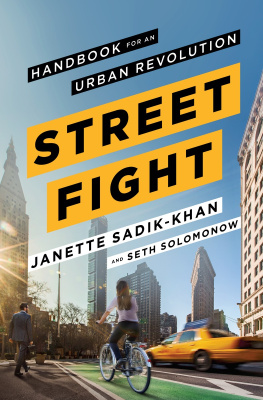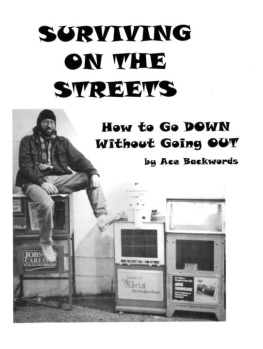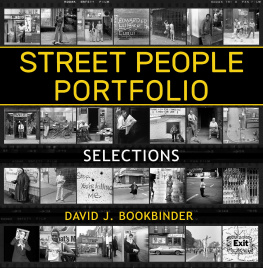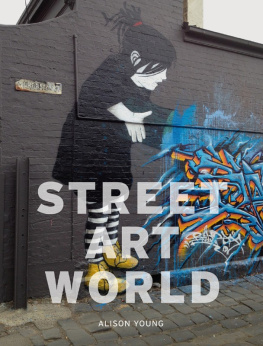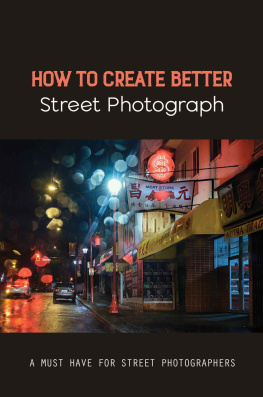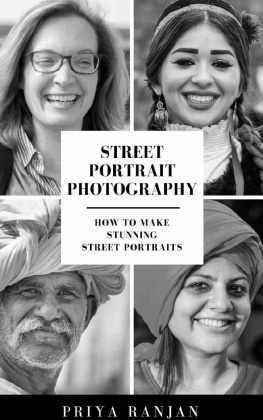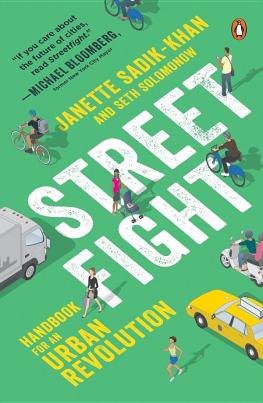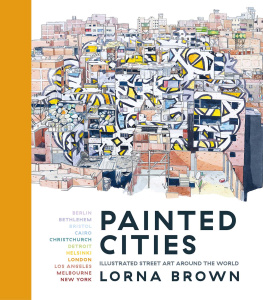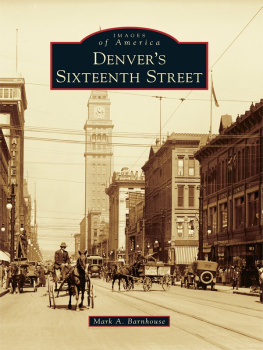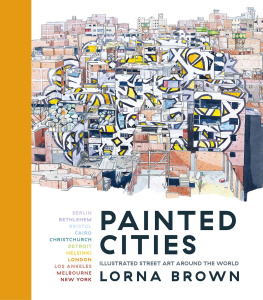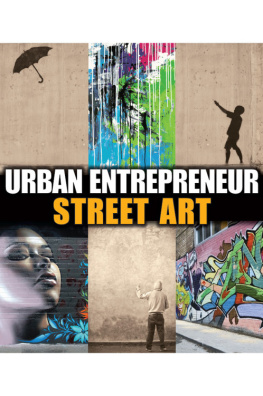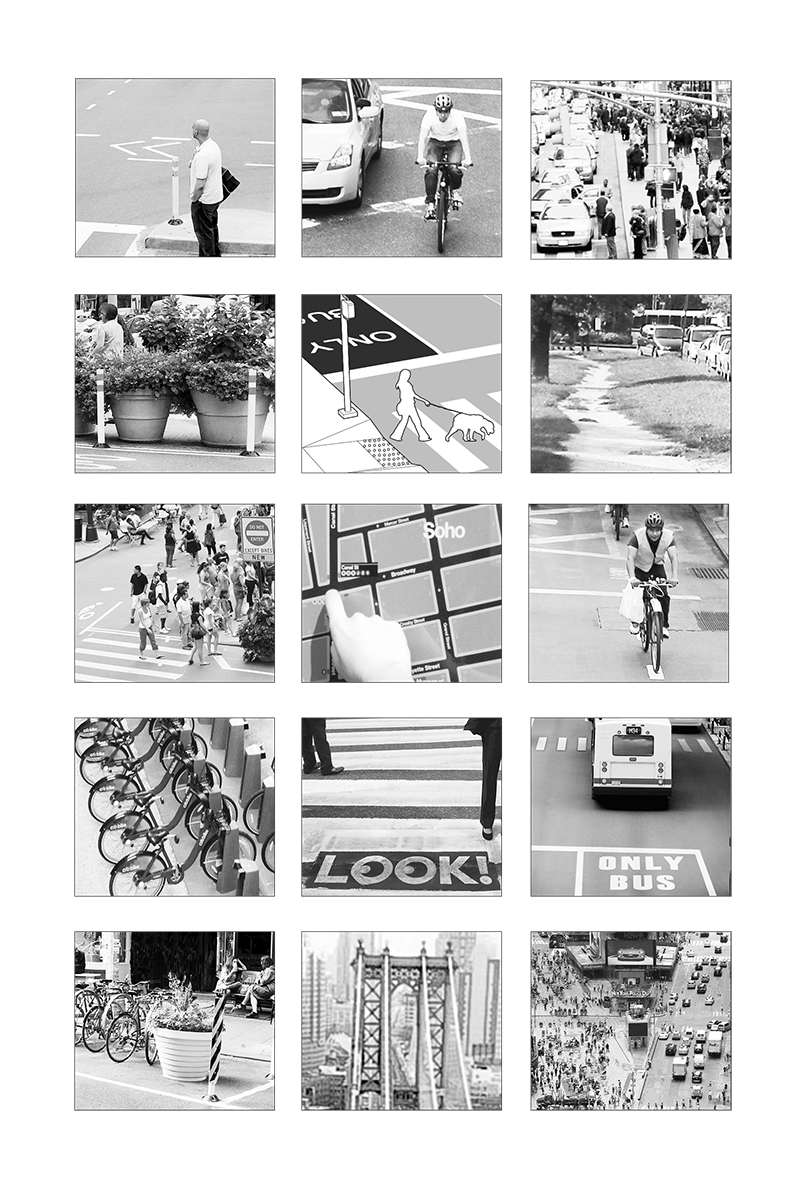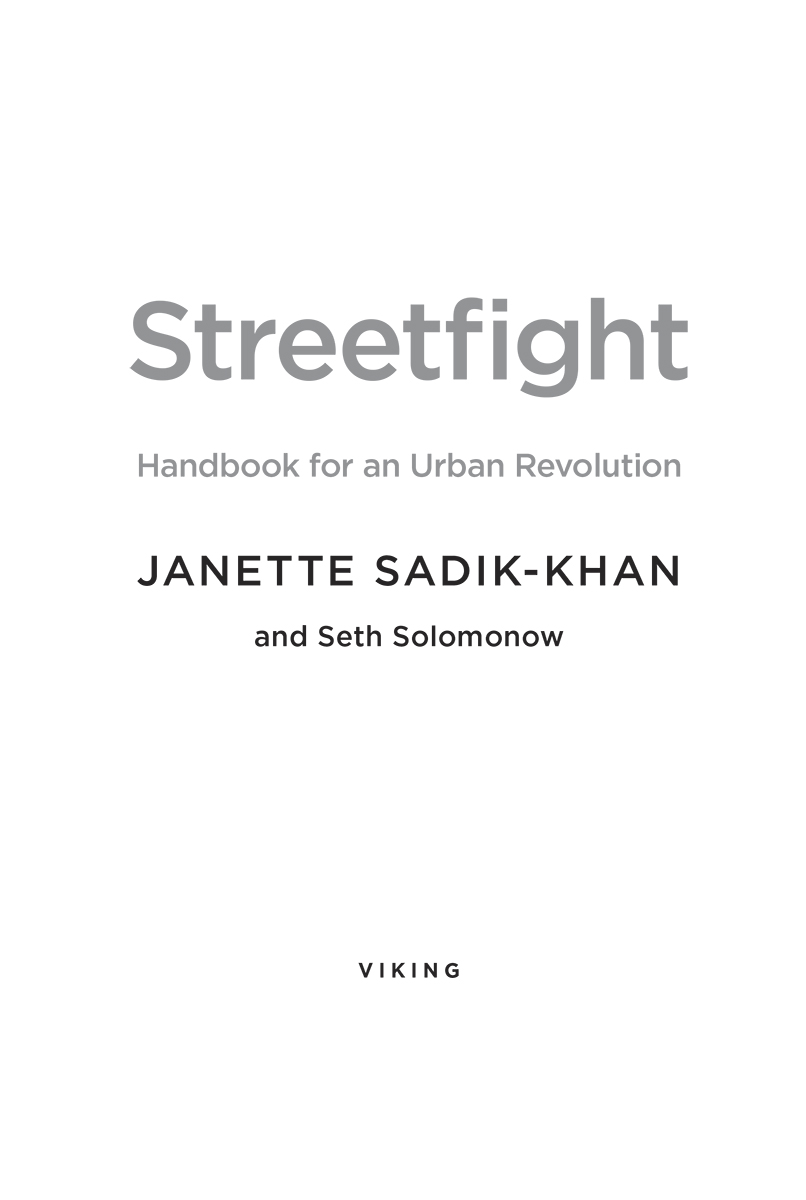Penguin supports copyright. Copyright fuels creativity, encourages diverse voices, promotes free speech, and creates a vibrant culture. Thank you for buying an authorized edition of this book and for complying with copyright laws by not reproducing, scanning, or distributing any part of it in any form without permission. You are supporting writers and allowing Penguin to continue to publish books for every reader.
Interior : From Urban Street Design Guide by NACTO. Copyright 2013 National Association of City Transportation Officials. Reproduced by permission of Island Press, Washington, DC.
Interior : Used with permission of the City of New York. 200514. New York City Department of Transportation. All rights reserved.
Other credits appear in the captions of the respective images.
Cover images: (city background) Merten Snijders/Getty Images; (cyclist) Biederbick & Rumpf/F1 Online/Superstock; (businessman) Massimo Colombo/Getty Images
Preface
M y six-year, seven-month, eighteen-day tenure as New York City transportation commissioner began with a meeting at City Hall, at the foot of the Brooklyn Bridge, in early spring 2007.
Why do you want to be traffic commissioner? the 108th mayor of New York City asked me.
It was my first time even in a room with Mayor Michael Bloomberg, the billionaire entrepreneur-turned-mayor, now flanked by six of his deputies, Knights of Camelotstyle at an immense round table. Six years into his administration and two years into his second term, it wasnt clear to me that day who or what he was looking for in a commissioner. And here was his very first question.
His question wasnt a test. Its a common misconception that the commissioners job is limited to managing traffic.
I dont want to be the traffic commissioner, I responded. I want to be transportation commissioner.
Bloomberg said nothing, and no one jumped in to break the tension.
Well, at least I got to meet the mayor, I consoled myself, confident that I had just blown the interview.
Nevertheless, I pushed ahead with my priorities, unsure how theyd be received. I wanted to make New York Citys punch-line buses work better. I wanted to make bike riding a real, safe transportation option on New Yorks mean streets. I wanted to institute a toll for people driving into Manhattan during rush hour, creating the congestion that chokes the city, and use its revenue to make these new public transportation options possible.
These were far from mainstream transportation ideas, but I assumed that Team Camelot must have wanted to hear my pitch or they wouldnt have asked me to the table. Michael Bloombergs reputation globally was for innovation and a by-the-numbers-please approach to governance. This was the mayor who created the 311 system that allows residents to dial one number to obtain virtually any city service. He had banned smoking in bars and trans fats from restaurantstrifles compared with his overseeing dramatic reductions in crime and wresting control over city schools from a notoriously ineffective Board of Education. But at the time I sat in front of him, there was no transportation leg to his legacys table, no initiative, goal, or accomplishment on the scale of his other achievements that addressed the fundamental issues of congestion, danger, mobility, and economic stagnation on New Yorks streets.
So I was direct. I knew how the city worked and I wanted to change its transportation status quo. Fifteen years earlier I finished my tenure as transportation adviser to Mayor David Dinkins, after counseling him on local and regional transportation issuessubways, buses, bridges, transit hubs, airports, and highwayswhich included agencies and authorities and not just the transportation department he controlled. Since then I worked under President Bill Clinton at the Federal Transit Administration, helped run the transit practice at Parsons Brinckerhoff, a major international transportation engineering firm, and was founding president of a subsidiary technology consulting company. Based on my audience with Bloomberg, I assumed that he and his team were not on the hunt for someone to ride out the rest of the term with little change or controversy. They wanted a commissioner who understood government architecture and the elements of transportation, but with a private-sector metabolism that thrived on ideas and innovative approaches to problems.
Glancing around the table as the interview continued, I did not sense much interest in these ideas. I was even more certain that my appointment would never happen.
I misjudged.
Bloomberg offered me the job after a second meeting, a breakfast of slightly burned toast and coffee at Viand, his favorite local diner on the Upper East Side. I discovered the reason there wasnt more palpable enthusiasm in the room when I first interviewed: The crux of this city-altering approach was already being codified into PlaNYCa long-range sustainability plan guided by Dan Doctoroff, the visionary deputy mayor for economic development. PlaNYC had not yet been unveiled to the public, explaining why the mayor and his team didnt react to the various proposals that I had put forth during the interview.
PlaNYC was a detailed, 127-initiative blueprint for urban sustainability unlike anything New York or any big city had ever seen. It stated a goal of , which would have a profound impact on the operation and allocation of resources of every city agency. And it was the first articulation of a vision that would require changing the basic design and use of city streets. For transportation it demanded new strategies, like developing networks of rapid buses and bike lanes, bringing open space into every neighborhood in New York City, and using less energy and more sustainable materials in the construction of streets. PlaNYC was a manual to rewrite the existing street code and overcome the myth that New York was an ungovernable city, a place where the status quo would always prevail.
This new vision came into focus as a growing advocacy movement hit critical mass, spurred by Transportation Alternatives, the Tri-State Transportation Campaign, the Straphangers Campaign, and political outsiders who often understood the goals of government more keenly than many people in office. With the release of PlaNYC, the advocates suddenly found an administration proposing traffic solutions beyond traffic signs and signals and dedicated to safety, efficiency, and transportation investment based on data.
Bloomberg introduced me to reporters and to the New York City public at a press conference on April 27, 2007, one week after PlaNYC was announced. Dont fuck it up, he whispered to me after we finished our remarks. He was only half kidding. I didnt realize at the time that it was a piece of advice he gave all his appointees.
Back in New York Citys Department of Transportation after a long hiatus, I knew that the agency influenced more than just traffic. New York City has , is larger than the transportation departments for many American states. Instead of rural roads and highways, New Yorks portfolio contains some of the most valuable, dense, and contested real estate in the nation. Viewed through another lens, DOT had control over more than just concrete, asphalt, steel, and striping lanes. These are the fundamental materials that govern the entire public realm, and, if applied slightly differently, could have radical new impact.

